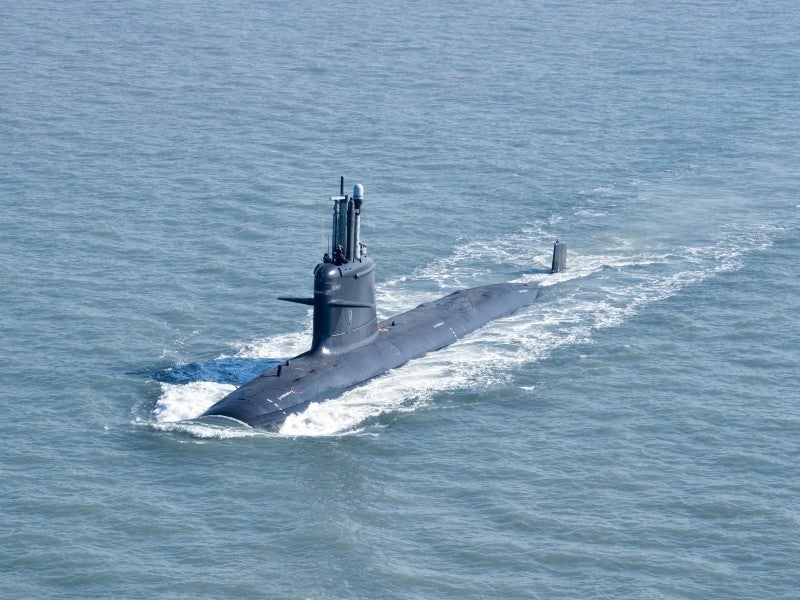
The Defence Research and Development Organisation (DRDO) and Larsen & Toubro (L&T) have joined forces to realise an indigenous Air Independent Propulsion (AIP) System for the submarines of the Indian Navy.
A select group of nations
The collaboration aims to enhance the endurance of conventional submarines and position India among a select group of nations with indigenous fuel cell-based submarine AIP technology.
The unique AIP system, developed by DRDO’s Naval Materials Research Laboratory (NMRL) with L&T as the prime industry partner, eliminates the need for carrying hydrogen onboard, thus ensuring safety while generating non-polluted water as a by-product.
In a development, Larsen & Toubro and the Defence Research and Development Organisation have recently inked a contract to realise two Air Independent Propulsion System Modules. These modules will be incorporated into the Kalvari Class of Submarines belonging to the Indian Navy.
The sixth submarine of the Kalvari-class initiated sea trials last month, signalling a step forward in enhancing India’s naval strength and self-reliance.
Tushar Sudesh Mangure, aerospace, defence & security analyst at GlobalData, claimed, “India has joined an elite group of countries to possess the fuel cell-based AIP technology.
The AIP was a vital requirement for the Project-75 (India) and Project-76 submarine programs, and its development was imperative for achieving the Indian Navy’s conventional submarine fleet expansion plan.
Larsen & Toubro (L&T) is the prime industry partner for the project and will obtain the Transfer of Technology from DRDO for manufacturing the AIP Systems.”
The contract exchange ceremony occurred in the presence of key officials from L&T and NMRL, with Shri Arun T Ramchandani, Executive Vice President and Head of L&T Defence, and Shri. PT Rojatkar, Director of the Naval Materials Research Laboratory, signed the agreement.
Indigenous development drive
Before Russia invaded Ukraine, it was thought that Russia would compete for a contract to develop the AIP systems for India’s submarine fleet. However, India has since pushed to reduce their military equipment imports by pushing an indigenous development drive.
Larsen & Toubro, an Indian company, also won a contract in March 2022 to build multi-purpose vessels for the Indian Navy.
Tushar Sudesh Mangure, aerospace, defence & security analyst at GlobalData, continued, “The indigenous development of state-of-the-art fuel cell-based Air Independent Propulsion (AIP) System by the Defence Research and Development Organisation (DRDO) is a major technological breakthrough and will enable India to reduce import dependency for critical defence technologies.
The project also highlights the increasing significance of Indian private sector companies in expanding the defence manufacturing ecosystem.”
The core of the AIP System, called Energy Modules (EMs), comprises fuel cells that generate the necessary power and onboard hydrogen generation. This indigenous AIP technology is particularly notable as it creates hydrogen on demand, eliminating the safety concerns associated with carrying hydrogen onboard submarines.
By realising and integrating these modules, India will join an elite group of nations that have successfully developed fuel cell-based AIP technology, thereby enhancing the endurance of conventional submarines. Moreover, this technology is environmentally friendly, as the by-product of the reaction is non-polluted water that can be safely released into the oceans.
Shri Arun Ramchandani expressed his pride in this accomplishment: “L&T is privileged to be associated with the realisation of an indigenous AIP system, marking India’s entry into a select group of nations that have developed this critical technology.”
L&T has been granted the Transfer of Technology for the AIP System developed by DRDO. The transfer documents were handed over to Mr Patil by the Honorable Raksha Mantri Shri Rajnath Singh during Aero India 2021 in Bangalore, in the presence of the Chief of Defence Staff and the Navy Chief.
The manufacturing, integration, and factory acceptance trials of the EMs will be undertaken at L&T’s AM Naik Heavy Engineering Complex in Surat. These EMs will be supplied for integration into the AIP Plug, which will be retrofitted into the submarines.
This collaboration is expected to pave the way for additional orders for AIP Systems, as the remaining five Kalvari Class submarines can benefit from this technology in the coming years. Furthermore, this achievement opens up potential export opportunities to other countries operating Scorpene class submarines, solidifying India’s position as a global technology provider in the maritime defence sector.








